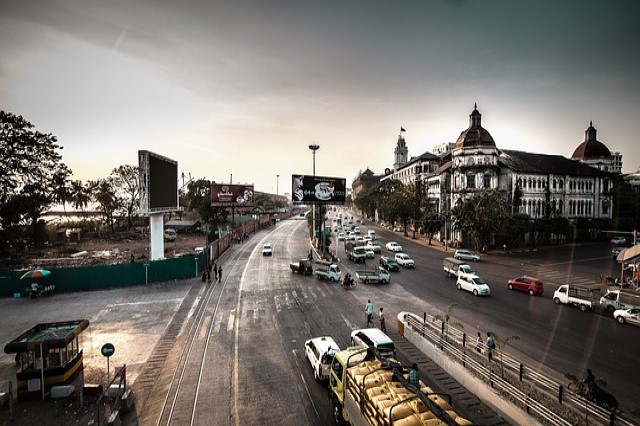

As infrastructure development remains a key challenge in Myanmar, the government puts high hopes on industrial and special economic zones, or called SEZ. The road is one key element of transport for local and global trade in Myanmar, but around 79% of roads are still unpaved. As the second largest-largest country in ASEAN, Myanmar has only 5,844 km of railroad, majority of which are nearly 100 years old. Additionally, airline cargo services are not popular due to high costs. While for sea-trade, Yangon has a major port which handles close to 90% imports and exports despite the total 9 seaports available across the country.
The Thilawa SEZ is the first large-scale SEZ in Myanmar. It is located 23 km southeast of Yangon with 2,400 hectares (ha) in total area. The zone is being developed under a public-private partnership joint venture, Myanmar Japan Thilawa Development Ltd. (MJTD). The 1st phase started to operate in August 2015, followed by the 2nd phase at the end of 2016, and the 3rd phase ended in 2018.
Solidiance’s white paper, “Myanmar, the Next Manufacturing Hub - with Focus on Special Economic Zones”, analyzed three cornerstones for Thilawa chosen to be developed as SEZ. First, it’s strategically located both near to the new deepwater seaport of Thilawa as well as the Yangon port, which handles more than 80% of the country’s trade. Second, it’s prioritized by the government to be implemented, considering the generous benefits for export-oriented companies. Third, it has an efficient operation procedure which facilitates investment permit for the investors.
Thilawa SEZ has the main hub through deep seaport, which consists mainly manufacturing industries, construction materials and garment, lured by the cheap labor cost and generous incentive schemes for export-oriented businesses. Nearly 49% of the total ~USD 180 million investment is held by a Japanese consortium comprising Mitsubishi, Marubeni, Sumitomo, and the Japanese government. The rest is held by a group of Myanmar firms and Thilawa SEZ Management Committee.
Economic reforms in Myanmar have boosted business optimism leading to strong economic growth and influx of foreign firms. The government is actively increasing share of industrials and boost exports in the economy. Myanmar’s GDP trend is estimated to outpace ASEAN+5 until 2019. Once the new Foreign Investment Law (FIL) was introduced in 2012, FDI started pouring into additional sectors such as manufacturing, real estate, communications, and others, driven by investments via industrial zones and SEZ developments.
The zone provides several benefits for investors, including tax exemption for first 5-7 years, 50% relief on subsequent, and investors can lease land up to 75 years. It also offers access to ~2.3 billion consumers across the region. The SEZ’s substantial contribution helps the manufacturing shift from low to medium value industries.
SEZs would be potential to develop better infrastructure in Myanmar. The report stated that there’s an urgency for investing in Myanmar to gain the right contacts and establish a suitable network amidst the influx of international companies. It’s also important to implement intensive and continuous training for the unskilled labor in manufacturing industries. Furthermore, the companies need to identify potential local partners.
Read more about Myanmar Special Economic Zone on white paper Myanmar, the Next Manufacturing Hub - with Focus on Special Economic Zones

SEA Cryptocurrency Regulations and Policies
Navigating SEA's cryptocurrency regulations requires a nuanced understanding of the regulatory landscape, adoption trends, and influencing factors.

Opportunities in Digitalization App for Automotive Lubricant Market in SEA
The automotive lubricant market in Southeast Asia is at the cusp of a digital revolution. Stakeholders can anticipate a continued surge in digitalization applications for the lubricant market, aimed at driving efficiency, enhancing customer experiences, and championing sustainability initiatives. Key themes such as e-commerce, data analytics, IoT integration, personalized experiences, and sustainability are poised to shape the industry's trajectory, providing opportunities for innovation and growth.

The Transformation of Myanmar's Garment Industry
Myanmar's garment industry has undergone substantial expansion and change in recent years. Learn more about the latest developments in the sector.

The Development of Agriculture in Myanmar
Learn more about the latest advancements in Myanmar’s agriculture sector as the industry continues to mature.